5 Reasons Why Visiting Buchenwald Concentration Camp Is a Must – 2023
A Journey to the Dark Side of the Histoy: Buchenwald Concentration Camp
Because of the Liberation Day of Buchenwald Concentration Camp, I had a chance to visit there again. While I was there, perhaps due to the survivors’ speeches or other factors such as the atmosphere, I decided to write about the Buchenwald Concentration Camp. This includes both a guide to Buchenwald and my opinion about this part of human history. So let’s talk about a place that holds a lot of significance in history—the Buchenwald Concentration Camp.
It was the perfect time to visit the Buchenwald Concentration Camp because of its 78th Liberation Year. Although I had been there before, I can say that it was a very touching and impressive trip.
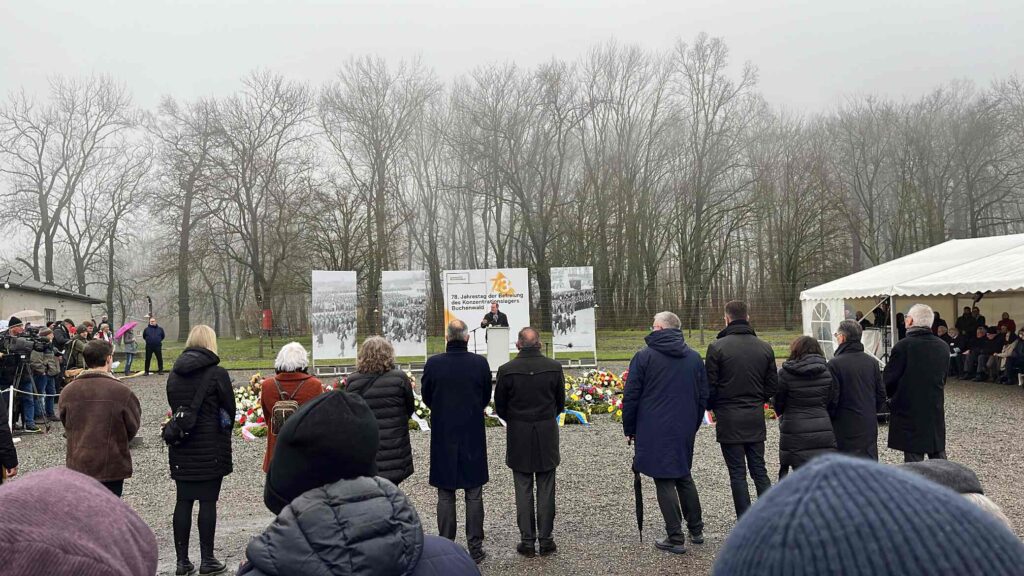
On the 78th anniversary of the Buchenwald Concentration Camp, speeches were given by survivors of the concentration camp.
How can you go from Weimar to Buchenwald Concentration Camp?
The Buchenwald Concentration Camp Memorial is located approximately 10 kilometers northwest of Weimar. By car or taxi from Weimar to Buchenwald the journey takes around 20 minutes. Also bus line 6 runs regularly from Weimar to Buchenwald. The journey takes around 30 minutes.
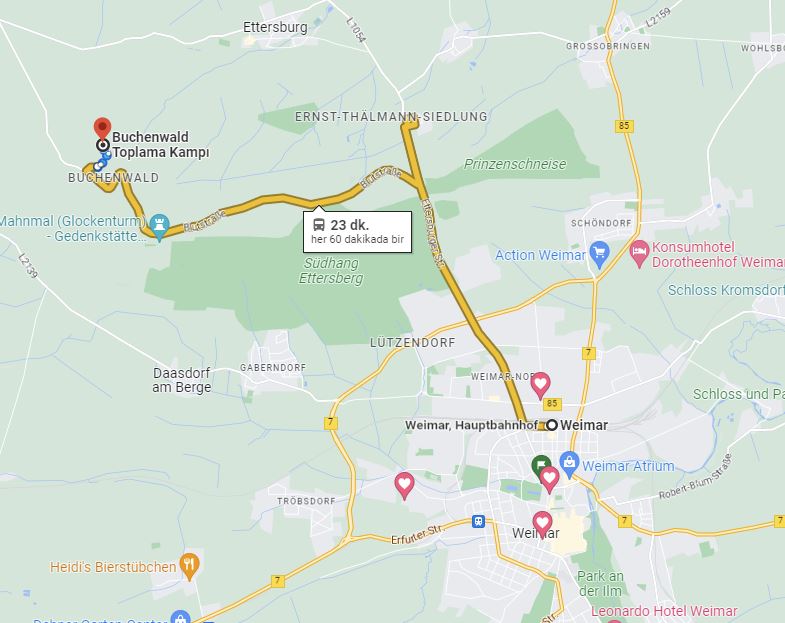
Why you should definitely visit Buchenwald Concentration Camp: 5 Reasons
1. History isn’t solely about what happened in the past
Firstly, Buchenwald is an incredibly important place in the context of the Holocaust. This was one of the largest concentration camps in Germany during World War II, and it’s estimated that around 56,000 people died here.
A visit to Buchenwald gives you a chance to learn about the atrocities, brutality that were committed here and pay your respects to the victims.
Beyond that, visiting Buchenwald can give you a deeper understanding of the importance of bearing witness and paying tribute the memory of those who suffered. It’s easy to forget about the past and move on, but it’s crucial that we remember what happened in order to prevent future genocides. By learning from history, we can apply those lessons to the present day.
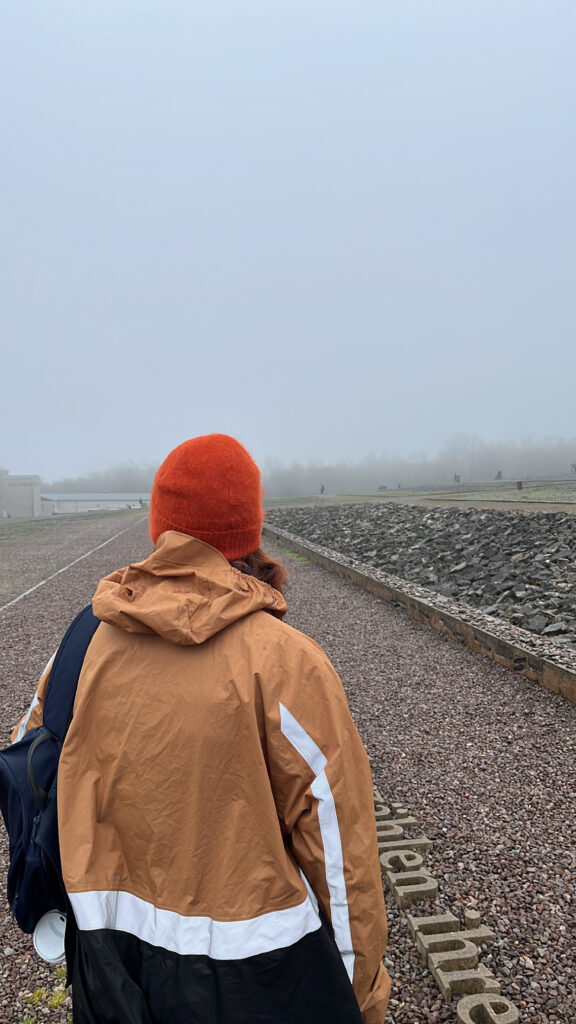
During my visit, I have read the stories about the victims and learn about their experiences. Additionally, seeing one of the old inmates, a French survivor who was nearly 100 years old, was very emotional. He shared how he felt when the soldiers came and said, ‘We are the peace soldiers,’ and he described the emotions he experienced during that time. It’s a sobering reminder that behind the statistics, there were real people who suffered unimaginable horrors. It’s an emotional experience, but one that is incredibly important to have.
Visiting Buchenwald can give you a newfound appreciation for the importance of preventing future genocides. By seeing what happened here and understanding how it happened, we can work towards creating a world where atrocities like this don’t happen again. It’s a difficult lesson, but one that’s worth learning.
2. Buchenwald serves as a powerful memorial to the victims of the Holocaust
Buchenwald is a name that has become synonymous with the atrocities of the Holocaust.
Today, the camp serves as a powerful memorial to the victims of the Holocaust, providing a place for reflection and remembrance for those who suffered and died there.
As visitors approach the gates of Buchenwald, they are directly struck by the enormity of the place. The camp stretches out over a vast area, with rows upon rows of barracks and watchtowers looming in the distance. Inside, visitors can explore the various exhibitions and memorials that have been set up to honor the victims of the Holocaust.
Buchenwald Concentration Camp includes the crematorium, where thousands of bodies were burned, and the bunker, where prisoners were tortured and killed.
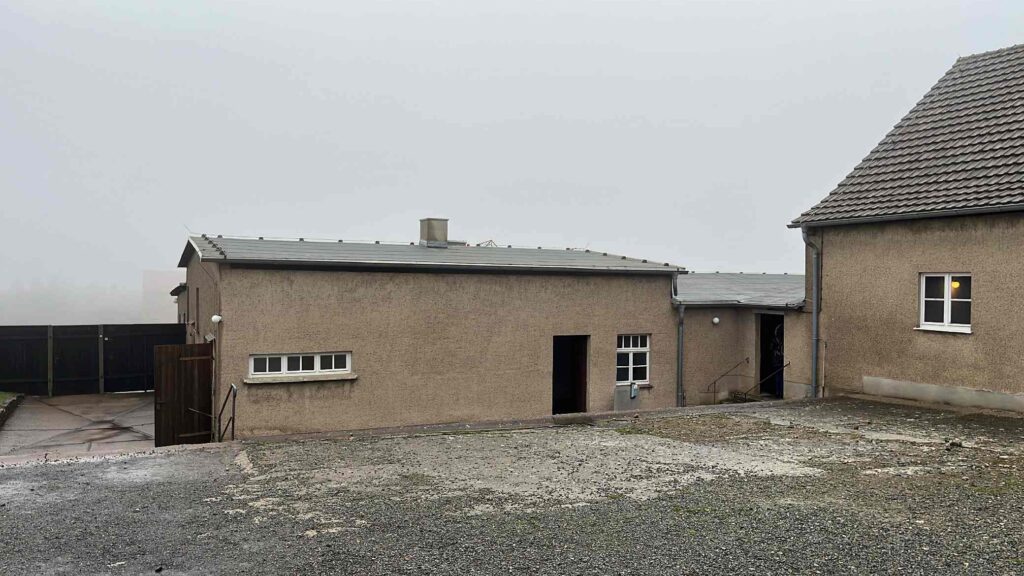
One of the most moving aspects of Buchenwald is the vast network of memorials and monuments that have been created to honor the victims. These range from simple plaques and markers to elaborate sculptures and installations, each one telling a different part of the story of the Holocaust.
Perhaps the most iconic of these is the memorial to the 56,000 people who died at Buchenwald, which features a large stone wall inscribed with the names of each individual.
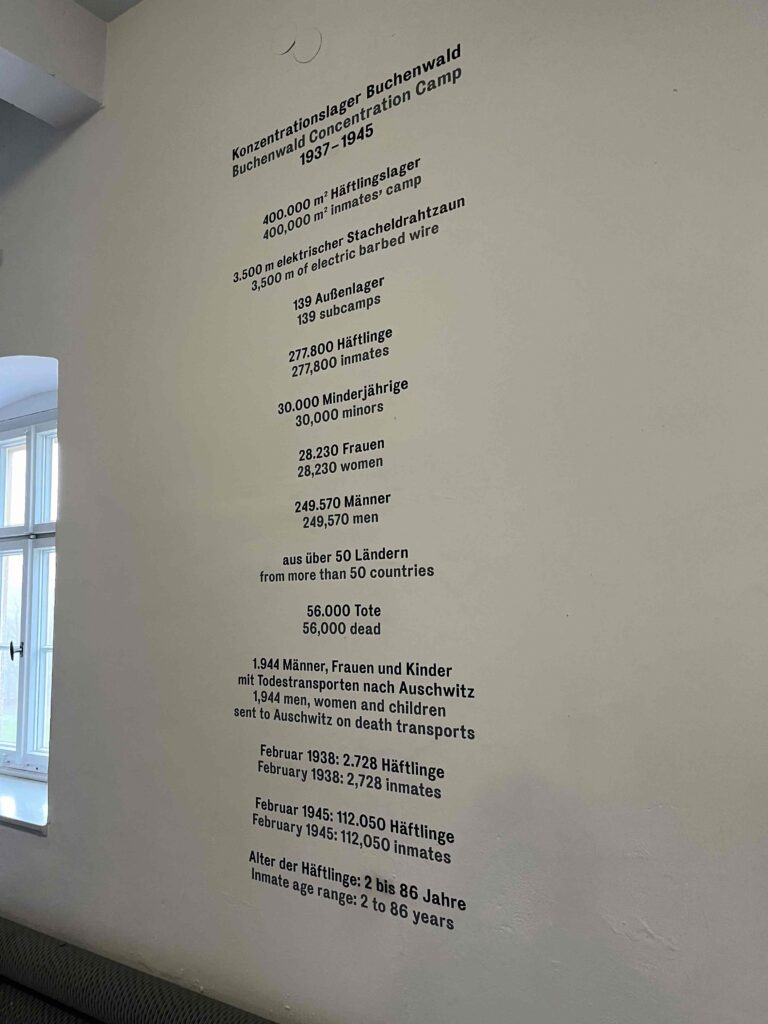
A trip to Buchenwald is a actually deeply emotional experience. Walking through the camp, you will confronted with the stark reality of the Holocaust and the immense suffering that took place there.
By remembering the victims and honoring their memory, we can ensure that the lessons of the Holocaust are never forgotten and that such atrocities are never repeated again.
3. Deeper understanding of the devastating consequences of intolerance and hatred
Visiting Buchenwald can be a profound experience, allowing individuals to learn about the horrors that took place there and to gain a deeper understanding of the consequences of bigotry and prejudice.
By witnessing the camp’s physical remains and hearing survivors’ stories, visitors can begin to comprehend the enormity of the crimes committed and the impact they had on the world. However, the lessons of Buchenwald extend far beyond its physical location. They are a reminder of the value of promoting social responsibility and accountability in all aspects of life.
By working to combat intolerance and hatred wherever it exists, we can honor the memory of those who suffered at Buchenwald and strive to create a world where such brutality are never repeated.
4. Empathizing with Inmates : Deeply Personal Connection to Buchenwald
It is actually not easy to empathize to the people they suffered from hatred, racisism in those times and were sended to Buchenwald Concentration Camp. But still, witnessing history so closely pushes people to deep thoughts.
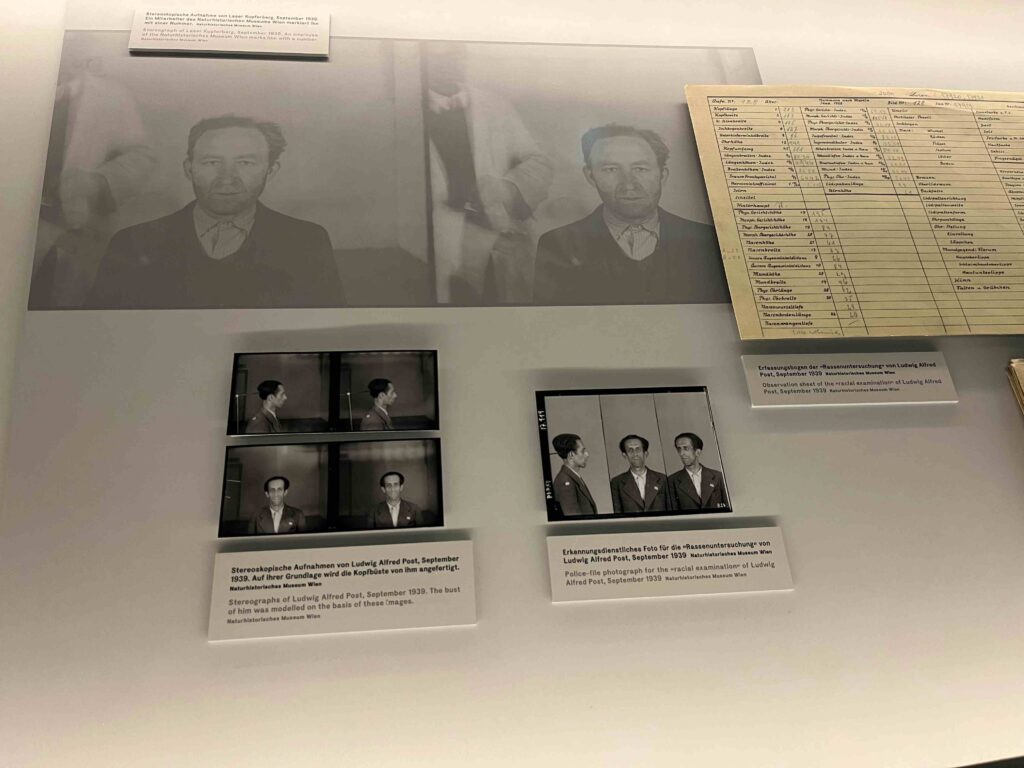
For those who lost family members in the Holocaust, visiting Buchenwald can be a powerful way to pay tribute to their loved ones and to honor their memory.
It can also help as a way to connect with history and gain a deeper understanding of the impact of the Nazi regime on millions of people.
5. Learning For Future: Dark Side of the Human History in Buchenwald
The prisoners at Buchenwald were subjected to unimaginable cruelty, including medical experiments, forced labor, and physical torture.
The Nazi guards and their collaborators treated the prisoners with contempt and brutality, denying them even the most basic human rights. The prisoners were often forced to perform grueling labor under harsh conditions, with little food or water.

Despite the terrible conditions, many of the prisoners at Buchenwald showed incredible resilience and bravery, risking their lives to resist the Nazi regime. Some formed underground resistance groups, while others shared information and supported each other in small acts of kindness.
Today, the Buchenwald Memorial serves as a powerful reminder of the violence committed during World War II. It stands as a testament to the human capacity for evil, and the importance of learning from previous times to construct an improved future.
What to see in Buchenwald Concentration Camp
Here’s what you should see in Buchenwald Concentration Camp.
Visitor Centre/Reception Centre
The visitor center at Buchenwald serves as an introduction to the history of the camp. It provides an overview of the camp’s history, including the daily life of the prisoners and the atrocities that were committed there.
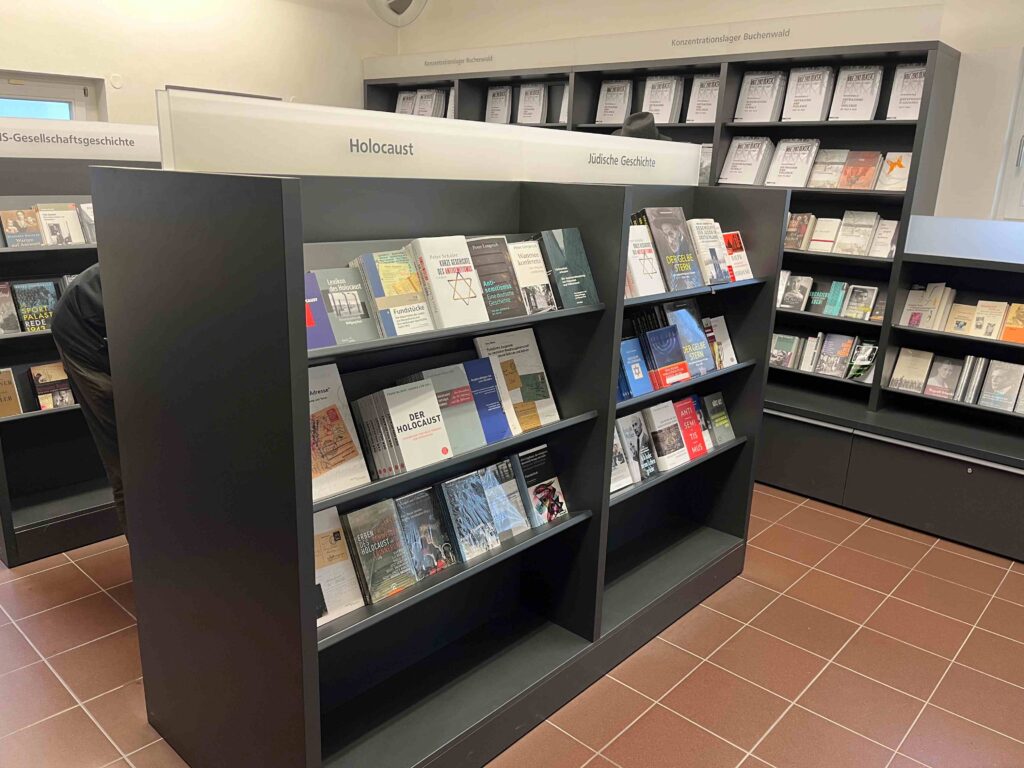
It’s an important starting point for any visitor and will help you understand the significance of what you’re about to see. Also you can buy books or gifts about the Camp and his history.
Gatehouse of the camp and the wording in the main camp gate
The gatehouse of the Buchenwald Concentration Camp is one of the most iconic structures at the site. It’s the first thing you’ll see as you enter the camp, and it’s where the infamous phrase “Jedem das Seine” is displayed above the entrance.
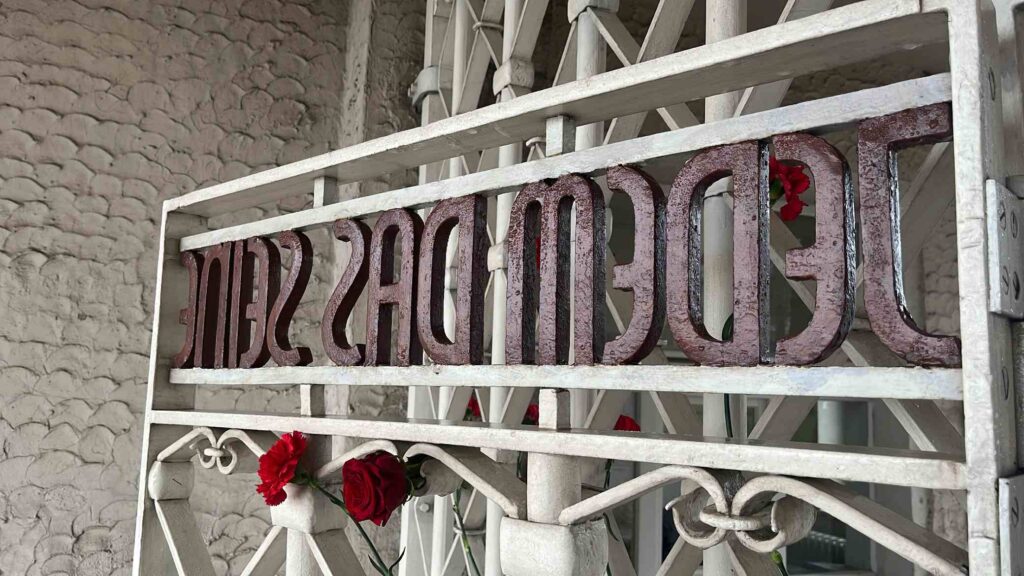
The phrase roughly translates to “to each his own,” and it’s a chilling reminder of the cruelty and indifference that characterized the Nazi regime.
The special prison or “Bunker”
The special prison or “Bunker” was a place of extreme punishment at Buchenwald. Prisoners who were considered to be “unmanageable” were sent here, and they were subjected to brutal conditions, including isolation, starvation, and physical abuse. The Bunker is a stark reminder of the inhumanity that took place at Buchenwald.
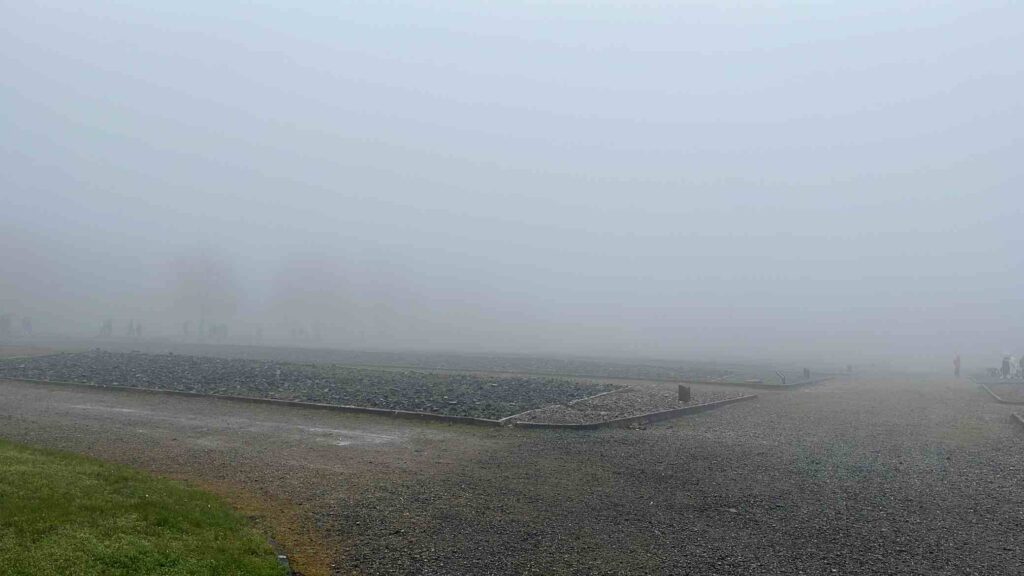
The former crematorium and remaining original buildings inside the fenced-in grounds
The former crematorium at Buchenwald is a haunting sight. It’s a reminder of the atrocities that were committed here, and it’s a stark contrast to the peaceful surroundings.
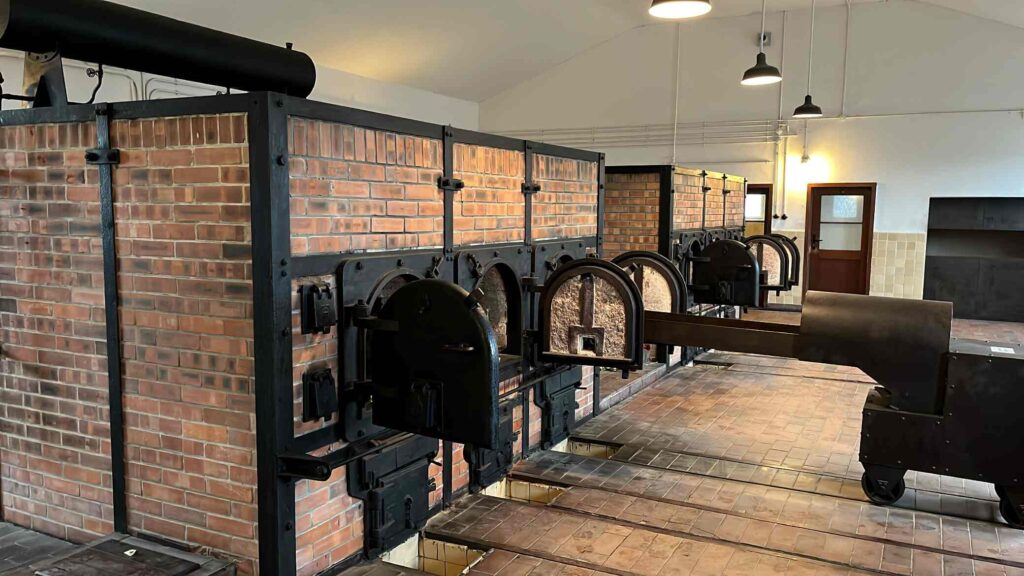
There are also several original buildings inside the fenced-in grounds, including the barracks where prisoners were housed and the hospital where medical experiments were conducted.
BUCHENWALD MEMORIAL/NATIONAL MONUMENT OF THE GDR
Buchenwald Memorial, also known as the National Monument of the German Democratic Republic. It was established in 1958 as a memorial to honor the victims of the Buchenwald concentration camp, which was one of the largest and most notorious Nazi concentration camps during World War II.
This area is not located within the camp, but it is a structure that you definitely need to see. As you walk up the stairs, an extremely epic feeling will fill you up. It is a huge structure and it is really impossible to express this feeling accurately.
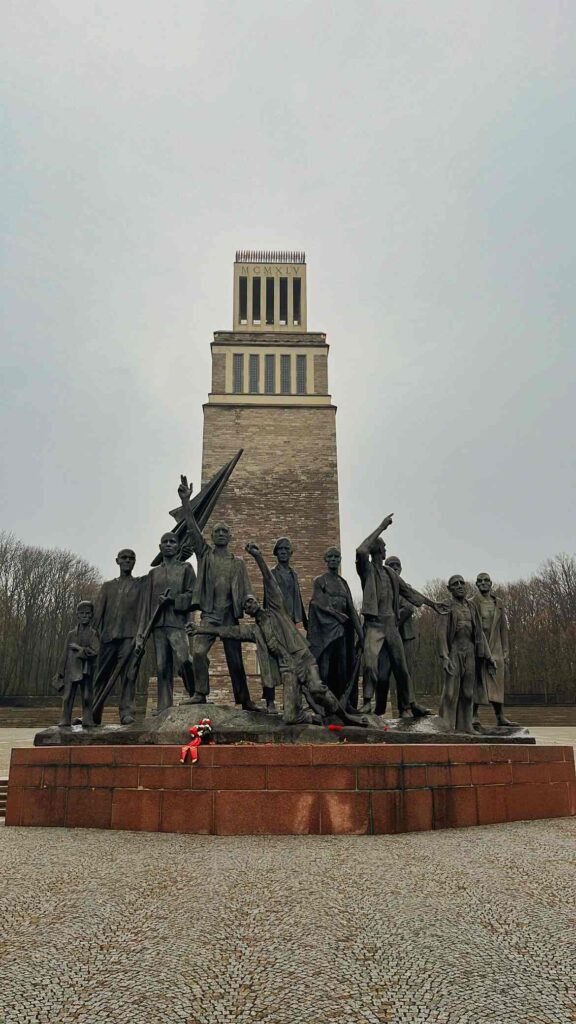
You can explore the camp’s grounds, including the watchtowers, barracks, and crematorium. Additionally, the memorial also features several sculptures, such as the Monument of Resistance, which commemorates the camp’s resistance fighters.
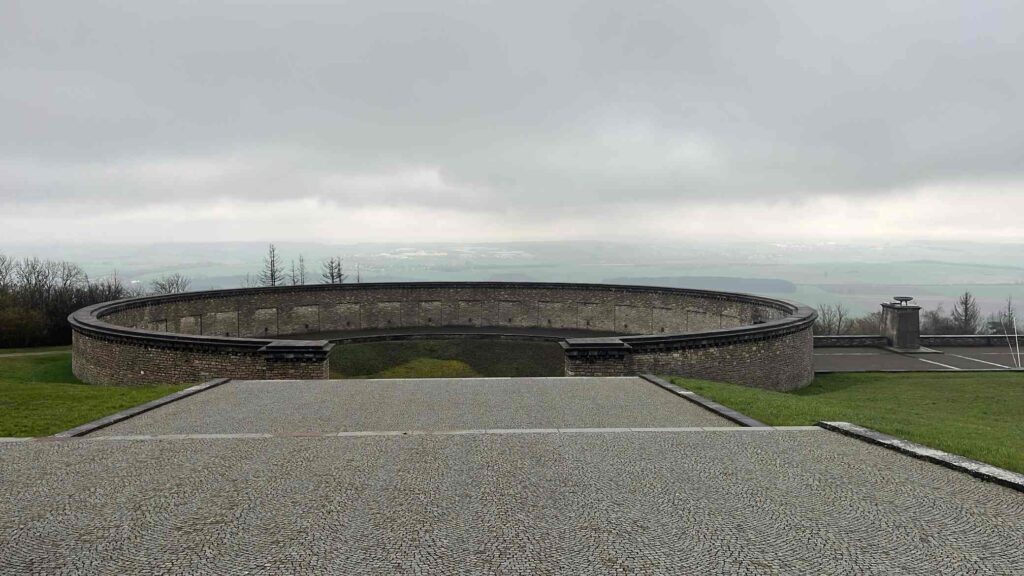
The “Blutstraße” and main memorial space outside the camp proper
The “Blutstraße” or Blood Road is a path that leads from the Buchenwald Concentration Camp to the nearby town of Weimar. The path is lined with trees, and it was here that prisoners were forced to carry out a gruesome task. They were required to walk up and down the path carrying bags of dirt, which were used to build the nearby Weimar-Buchenwald Memorial. The main memorial space outside the camp proper is a peaceful and contemplative place. It’s a fitting tribute to those who lost their lives at Buchenwald.
Frequently Asked Questions about Visiting Buchenwald Concentration Camp
How can I prepare for a visit to Buchenwald Concentration Camp?
If you’re planning a visit to Buchenwald, there are couple of things you should bear in mind to ensure you’re prepared for the experience. Don’t forget that you are visiting a concentration camp, where one of the most horrible crimes in human history was committed.
- Prepare yourself mentally and emotionally for the heavy and emotional experience.
- Approach the experience with respect and empathy.
- Wear comfortable shoes and clothing since you’ll be doing a lot of walking.
- Bring water and snacks with you as there aren’t many places to buy food on-site.
- Respect the site and follow the guidelines for behavior.
- Be mindful of your actions and follow any instructions given by staff.
Is it appropriate for children to visit?
The decision of whether to take children to Buchenwald Concentration Camp is a personal one that depends on the maturity and sensitivity of the child. The site can be emotionally challenging, and parents should be prepared to have difficult conversations with their children. However, the experience of visiting Buchenwald can be an important opportunity for children to learn about the importance of tolerance, empathy, and the devastating consequences of hatred and bigotry.
Can you visit without a guided tour?
Visitors can explore the site without a guided tour, but it is highly recommended to take a guided tour. The guides are knowledgeable and can provide a deeper understanding of the history of the site and the stories of the victims.
What is the best time of year to visit?
Buchenwald Concentration Camp is open to visitors all year round, but the best time to visit depends on personal preferences.
Spring: Late April to early June can be a good time to visit, with milder weather and fewer visitors. However, April 11th is the anniversary of the liberation of Buchenwald, which may attract more visitors.
Summer: Mid-June to August is the peak tourist season, with warm and sunny weather, but large crowds.
Fall: September to November can be an excellent time to visit, with cooler weather, fall foliage, and fewer visitors.
Winter: December to February is the low season, with fewer visitors, but cold and snowy weather. Keep in mind that the site may have reduced hours or be closed on certain days around the holidays.
How long does a visit typically take?
The duration of a visit to Buchenwald Concentration Camp varies depending on the interests and needs of the visitor. A guided tour in Buchenwald Concentration Camp typically takes about two hours, but visitors may choose to spend more time exploring the site on their own.
Opening Hours – Buchenwald:
Tuesdays through Fridays between 10:00-11:00 a.m. and 2:30-5:30 p.m., and on weekends from 10:00 a.m. to 5:30 p.m.
Check the official Buchenwald Memorial Website also for the Exhibitions Time and etc.
What is Chronology of the Buchenwald Concentration Camp?
| Date | Event |
|---|---|
| July 1937 | Construction of the Buchenwald camp begins |
| July 15, 1937 | The first prisoners arrive at Buchenwald |
| 1938 | Buchenwald becomes a “model camp” |
| 1939 | Buchenwald becomes a major camp for political prisoners |
| 1940 | Buchenwald begins receiving Soviet prisoners of war |
| 1941 | Gas chamber installed at Buchenwald, used for experimental purposes |
| 1942 | Executions at Buchenwald increase |
| 1943 | Buchenwald becomes a training ground for SS members |
| April 1945 | Prisoners at Buchenwald are liberated by the US Army |
| 1945-1950 | Buchenwald is used by Soviet occupation forces as a prison and internment camp |
| 1950-1958 | Buchenwald is used by East German authorities as a prison and internment camp |
| 1958 | Buchenwald is closed down |
What was Buchenwald Concentration Camp like during Soviet rule?
After World War II, Buchenwald concentration camp was taken over by the Soviet Union, and it became a special camp for German prisoners of war and suspected war criminals.
During the Soviet era, Buchenwald was known as NKVD special camp No. 2, and it continued to be used to detain political prisoners and those accused of crimes against the state. The conditions at the camp were harsh, and prisoners were subjected to forced labor, inadequate food and medical care, and brutal treatment by the guards.
Many former Nazi officials, including camp commandant Karl-Otto Koch and his wife, Ilse Koch, were held at Buchenwald during the Soviet period. Some were tried and executed for their crimes, while others were released after serving their sentences.
The Soviet authorities also used Buchenwald as a propaganda tool, showcasing the atrocities committed by the Nazis during the war. The camp was open to visitors, and Soviet officials led tours of the site to highlight the horrors of the Holocaust.
In 1950, the Soviet Union transferred control of Buchenwald to the East German government, which continued to use the site as a prison until 1958.
Final Words about Buchenwald Concentration Camp
In conclusion, visiting Buchenwald Concentration Camp is an essential and humbling experience that offers a deeper understanding of the atrocities committed during the Holocaust.
It provides an opportunity to learn about the stories of the victims and to honor their memory. More importantly, it enables us to bear witness to the atrocities of the past and to acknowledge the importance of preventing future genocides.
I highly encourage everyone to visit Buchenwald Concentration Camp and pay tribute to the victims of the Holocaust. As Elie Wiesel once said, “For the dead and the living, we must bear witness.” It is our responsibility to ensure that the memory of those who suffered and perished in the Holocaust lives on, and that we continue to learn from history to prevent such atrocities from happening again.
Thank you for reading this blog post, and I hope it has inspired you to plan a visit to Buchenwald Concentration Camp.
Places Near Buchenwald
After your visit to Buchenwald, there are nearby places that may interest you and that you can visit.
Especially Weimar is one of the places you definitely need to visit. Weimar has two UNESCO World Heritage sites. It is also of great importance in terms of German history. The Bauhaus Museum and the Bauhaus University are two important places for those interested in architecture.
Additionally, the Anna Amalia Library and the Belvedere Castle will also capture your interest. You can read my article for Weimar guide and travel tips. I’m sure it will be a good guide for you.
The Best Tips for Weimar: 10 Top-Rated Tourist Attractions
Erfurt is another important tourist destination. Erfurt, the capital of the Thuringian state in central Germany, is a city rich in history and culture.
Discovering Erfurt in 5 Steps Ultimate Guide
Another destination that I can recommend is Jena. If you want to spend more time in Thuringia.
Explore Jena: A Guide to Top 10 Attractions (2023)
Last destination I would suggest in Thuringia is Wartburg Castle. It is a unique castle and is one of a UNESCO World Heritage.
Wartburg Castle (2023 Ultimate Guide): UNESCO World Heritage
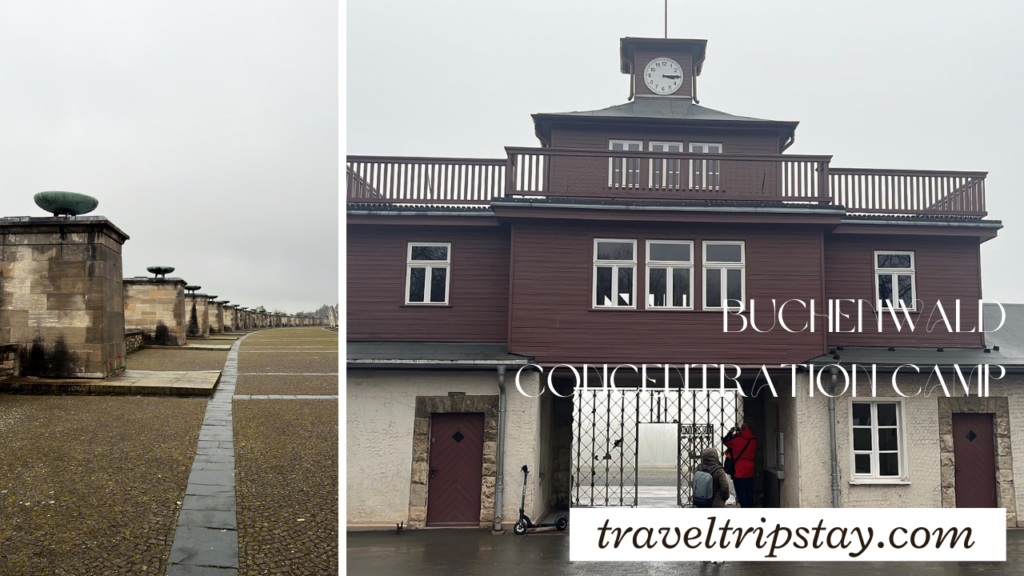

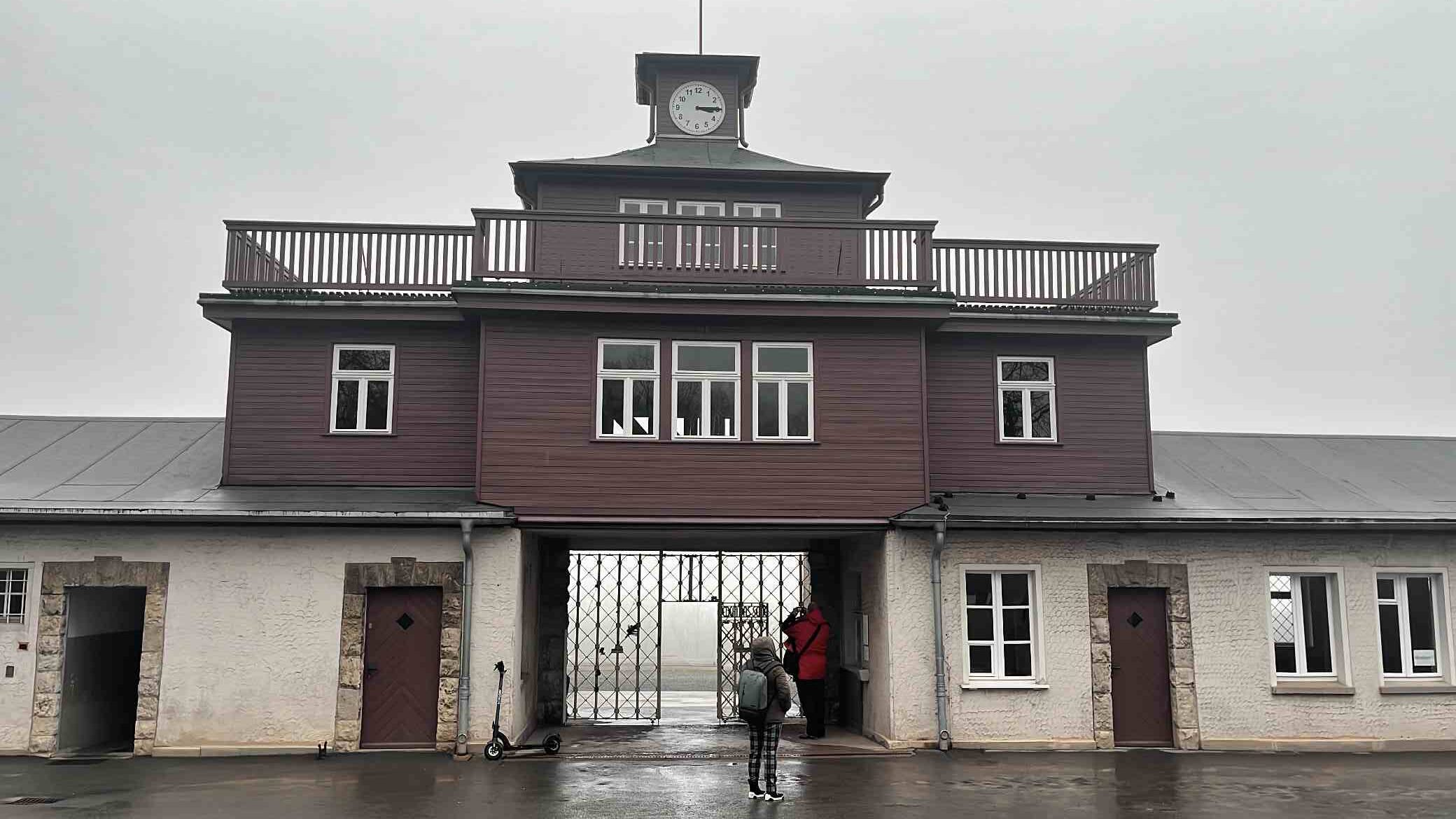
Comments are closed.